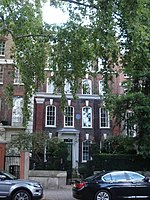1928 Thames flood
1928 disasters in the United Kingdom1928 floods1928 in England1928 in London1928 natural disasters ... and 7 more
Disasters in LondonEuropean windstormsFloods in EnglandHistory of the River ThamesJanuary 1928 eventsStorm tides of the North SeaUse British English from December 2017

The 1928 Thames flood was a disastrous flood of the River Thames that affected much of riverside London on 7 January 1928, as well as places further downriver. Fourteen people died and thousands were made homeless when floodwaters poured over the top of the Thames Embankment and part of the Chelsea Embankment collapsed. It was the last major flood to affect central London, and, along with the disastrous North Sea flood of 1953, helped lead to the implementation of new flood control measures that culminated in the construction of the Thames Barrier in the 1970s.
Excerpt from the Wikipedia article 1928 Thames flood (License: CC BY-SA 3.0, Authors, Images).1928 Thames flood
Chelsea Embankment, London Chelsea (Royal Borough of Kensington and Chelsea)
Geographical coordinates (GPS) Address Nearby Places Show on map
Geographical coordinates (GPS)
| Latitude | Longitude |
|---|---|
| N 51.484 ° | E -0.162 ° |
Address
Garden Corner
Chelsea Embankment 13
SW3 4LE London, Chelsea (Royal Borough of Kensington and Chelsea)
England, United Kingdom
Open on Google Maps










